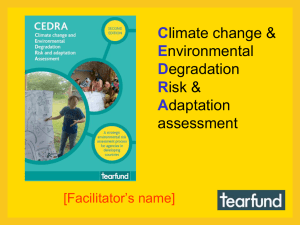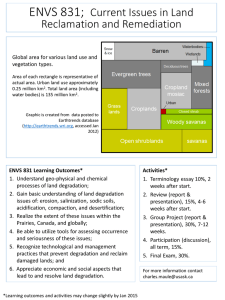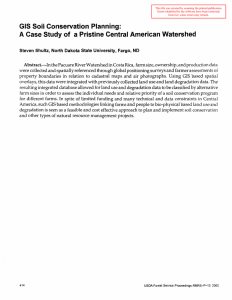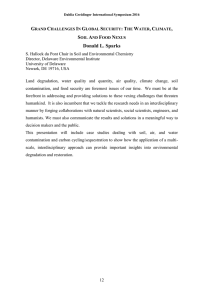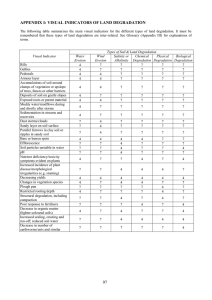LAND EROSION ON THE RISE WORLDWIDE
advertisement
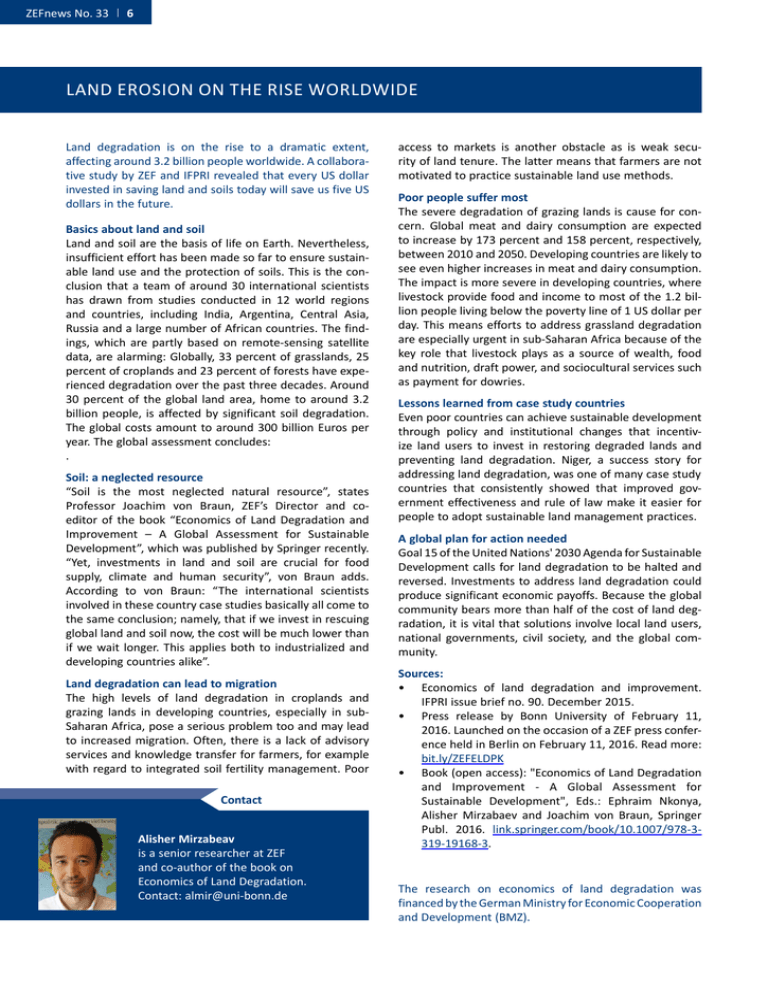
ZEFnews No. 33 6 LAND EROSION ON THE RISE WORLDWIDE Land degradation is on the rise to a dramatic extent, affecting around 3.2 billion people worldwide. A collaborative study by ZEF and IFPRI revealed that every US dollar invested in saving land and soils today will save us five US dollars in the future. Basics about land and soil Land and soil are the basis of life on Earth. Nevertheless, insufficient effort has been made so far to ensure sustainable land use and the protection of soils. This is the conclusion that a team of around 30 international scientists has drawn from studies conducted in 12 world regions and countries, including India, Argentina, Central Asia, Russia and a large number of African countries. The findings, which are partly based on remote-sensing satellite data, are alarming: Globally, 33 percent of grasslands, 25 percent of croplands and 23 percent of forests have experienced degradation over the past three decades. Around 30 percent of the global land area, home to around 3.2 billion people, is affected by significant soil degradation. The global costs amount to around 300 billion Euros per year. The global assessment concludes: . Soil: a neglected resource “Soil is the most neglected natural resource”, states Professor Joachim von Braun, ZEF’s Director and coeditor of the book “Economics of Land Degradation and Improvement – A Global Assessment for Sustainable Development”, which was published by Springer recently. “Yet, investments in land and soil are crucial for food supply, climate and human security”, von Braun adds. According to von Braun: “The international scientists involved in these country case studies basically all come to the same conclusion; namely, that if we invest in rescuing global land and soil now, the cost will be much lower than if we wait longer. This applies both to industrialized and developing countries alike”. Land degradation can lead to migration The high levels of land degradation in croplands and grazing lands in developing countries, especially in subSaharan Africa, pose a serious problem too and may lead to increased migration. Often, there is a lack of advisory services and knowledge transfer for farmers, for example with regard to integrated soil fertility management. Poor Contact Alisher Mirzabeav is a senior researcher at ZEF and co-author of the book on Economics of Land Degradation. Contact: almir@uni-bonn.de access to markets is another obstacle as is weak security of land tenure. The latter means that farmers are not motivated to practice sustainable land use methods. Poor people suffer most The severe degradation of grazing lands is cause for concern. Global meat and dairy consumption are expected to increase by 173 percent and 158 percent, respectively, between 2010 and 2050. Developing countries are likely to see even higher increases in meat and dairy consumption. The impact is more severe in developing countries, where livestock provide food and income to most of the 1.2 billion people living below the poverty line of 1 US dollar per day. This means efforts to address grassland degradation are especially urgent in sub-Saharan Africa because of the key role that livestock plays as a source of wealth, food and nutrition, draft power, and sociocultural services such as payment for dowries. Lessons learned from case study countries Even poor countries can achieve sustainable development through policy and institutional changes that incentivize land users to invest in restoring degraded lands and preventing land degradation. Niger, a success story for addressing land degradation, was one of many case study countries that consistently showed that improved government effectiveness and rule of law make it easier for people to adopt sustainable land management practices. A global plan for action needed Goal 15 of the United Nations' 2030 Agenda for Sustainable Development calls for land degradation to be halted and reversed. Investments to address land degradation could produce significant economic payoffs. Because the global community bears more than half of the cost of land degradation, it is vital that solutions involve local land users, national governments, civil society, and the global community. Sources: • Economics of land degradation and improvement. IFPRI issue brief no. 90. December 2015. • Press release by Bonn University of February 11, 2016. Launched on the occasion of a ZEF press conference held in Berlin on February 11, 2016. Read more: bit.ly/ZEFELDPK • Book (open access): "Economics of Land Degradation and Improvement - A Global Assessment for Sustainable Development", Eds.: Ephraim Nkonya, Alisher Mirzabaev and Joachim von Braun, Springer Publ. 2016. link.springer.com/book/10.1007/978-3319-19168-3. The research on economics of land degradation was financed by the German Ministry for Economic Cooperation and Development (BMZ).
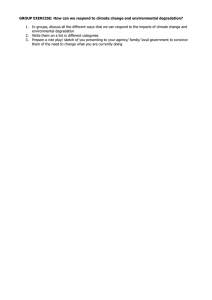
![Pre-workshop questionnaire for CEDRA Workshop [ ], [ ]](http://s2.studylib.net/store/data/010861335_1-6acdefcd9c672b666e2e207b48b7be0a-300x300.png)
